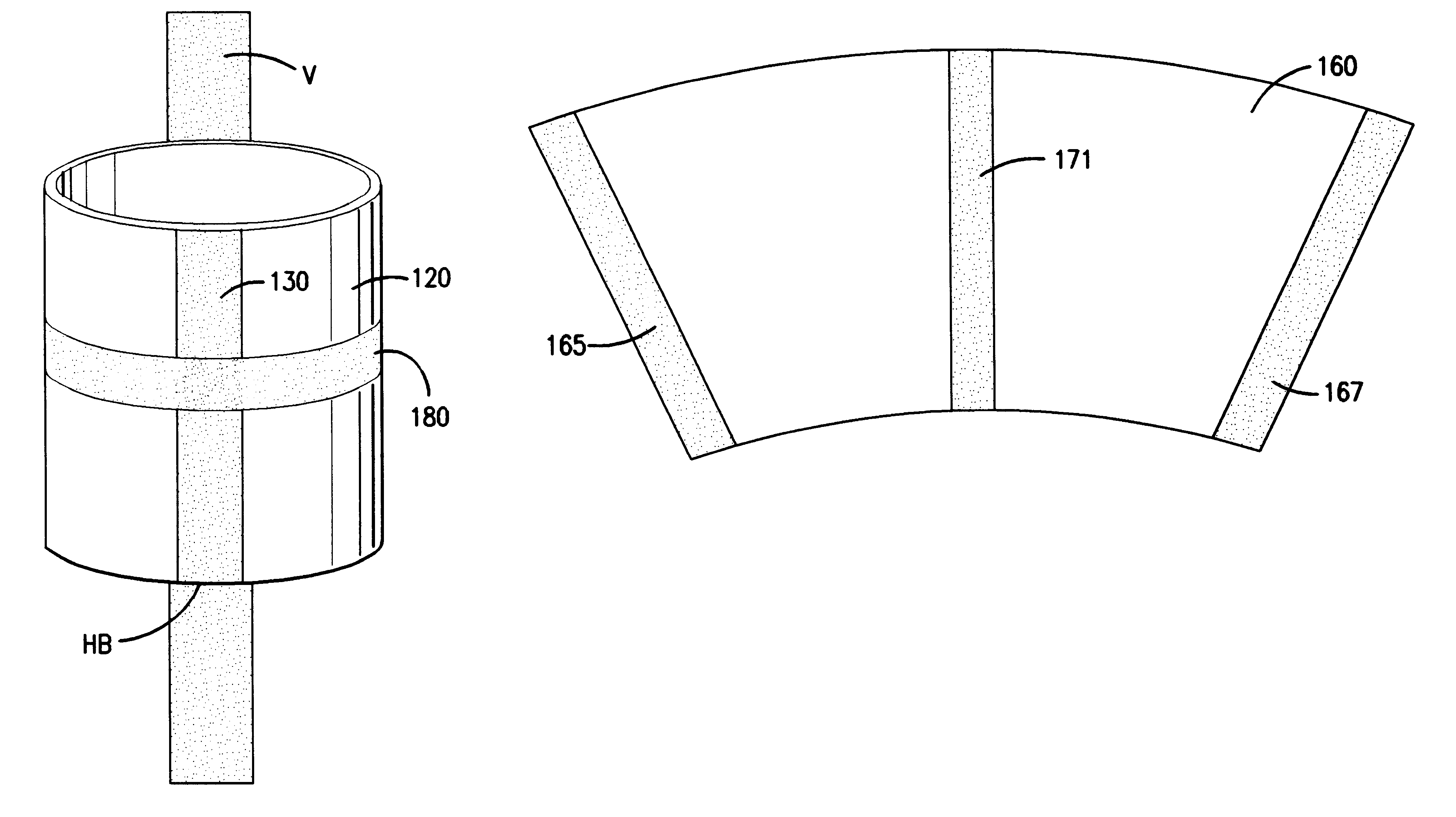Versatile beverage container holder
a beverage container and holder technology, applied in the direction of machine supports, washstands, refuse gatherings, etc., can solve the problems of difficulty in lifting a beverage out of the holder, the beverage container cannot be raised, and the wheelchair bound person is limited in what he or she can carry, so as to increase the frictional grip, facilitate the disassembly or storage, and facilitate the lifting
- Summary
- Abstract
- Description
- Claims
- Application Information
AI Technical Summary
Benefits of technology
Problems solved by technology
Method used
Image
Examples
Embodiment Construction
The presently preferred best modes for carrying out the present invention are illustrated by way of example in FIGS. 1 to 115.
Referring to FIG. 1, shown is a top plan view of a blank 100, preferably made of an insulating or non-insulating material, such as rubber, leather or neoprene. Two strap surface fasteners 104 and 106 are preferably permanently attached across the width of the blank 100 and spaced apart by approximately half the length of the blank. Preferably, the blank has a width of approximately 41 / 4" (10.8 cm) and length of approximately 91 / 4" (23.5 cm). The ends 112 and 114 are preferably permanently joined together to form a cylinder 120, as shown in FIGS. 3 and 4. Preferably, the strap surface fasteners 104 and 106 have widths of approximately 1" (2.54 cm).
Referring to FIG. 2, shown is a top plan view of a holder strap 130 of which the entire surface is a surface fastener, which is complementary to strap surface fasteners, 104 and 106 of FIG. 1.
Referring to FIG. 5, the...
PUM
 Login to View More
Login to View More Abstract
Description
Claims
Application Information
 Login to View More
Login to View More - R&D
- Intellectual Property
- Life Sciences
- Materials
- Tech Scout
- Unparalleled Data Quality
- Higher Quality Content
- 60% Fewer Hallucinations
Browse by: Latest US Patents, China's latest patents, Technical Efficacy Thesaurus, Application Domain, Technology Topic, Popular Technical Reports.
© 2025 PatSnap. All rights reserved.Legal|Privacy policy|Modern Slavery Act Transparency Statement|Sitemap|About US| Contact US: help@patsnap.com



